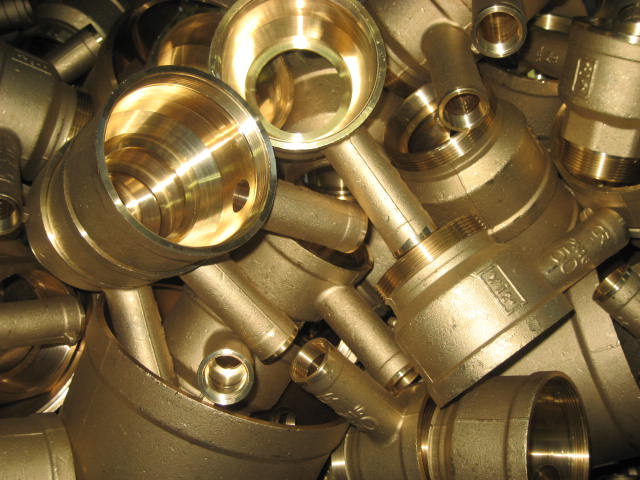Characteristics of brass forging
The brass and copper hot forgings are quality parts, comparing favorably in material integrity, dimensional tolerance and surface finishing with products made using other major metalworking processes. As a result of deformation, hot brass forging grants superior density and freedom from flaws. Forming under heat and pressure in precise closed dies produces dimensional accuracy, always repeatable part to part and lot to lot. Excellent surface finishing with a clean lustrous appearance is readily available with copper and brass forgings.
Unique Combinations of Properties
Brass, copper, and bronze forgings offer the engineers unique combinations of properties that other metals cannot match. Different alloys can be selected to exploit the following unique characteristics:
- High electrical and thermal conductivity
- Superior corrosion resistance
- High ductility
- Outstanding machinability
- Excellent joining and plating characteristics
- Superior polishing and finishing characteristics
- Non-magnetic properties
- Non-sparking characteristics
- Durable and sharp solid color, not just on the surface
Advantages of brass forging
Hot forging of brass offers a number of outstanding advantages over parts produced by other manufacturing processes. These advantages result from the inherent properties of copper and copper alloys plus additional improvements in mechanical and physical properties imparted by the forging process.
High Strength
In making a forging, the metal is worked twice under tremendous pressures: first during rod extrusion and then during forging. The double working under pressure compacts the metal and produces a very dense and refined grain or fiber structure.
The tensile strength of the parts is thereby increased, and resistance to impact and abrasion is enhanced.
Leak Resistance
The dense non-porous forged metal permits the designer to specify thinner sections without the risk of leaks due to flaws and voids. Often the thinner forged parts result in lighter weight and lower part cost compared to other forming processes.
Close Tolerances
A forging produced in a steel die with close tolerances offers several advantages. Overall part dimensions are held closer than in sand casting. Dimensions show minimum variation from part to part and permit automatic chucking and handling in subsequent operations. The precise designs on the die surface can produce sharp impressions on the forging surface, which is not economical with other forming processes.
Low Overall Cost
Mass production of brass forged parts lends itself to maximum savings. However, smaller quantities of copper alloy forgings can also prove economical when specific design problems must be overcome. These problems include leak integrity, close tolerances, high strength with low weight, and non-symmetrical shape.
FPM Group have the right machine for any forging need
Backed by our extensive expertise and our impressive stock of presses for brass forging, we are able to supply the right press and full forging line to any brass forger, no matter how challenging is the task. We have full automatic lines (working in continuous) and also manual loading presses. The most diverse parts can be forged on mechanical presses to obtain precise cavity coring both on the vertical and horizontal axis, and on friction screw presses to forge solid parts or with cavity on the vertical axis.

